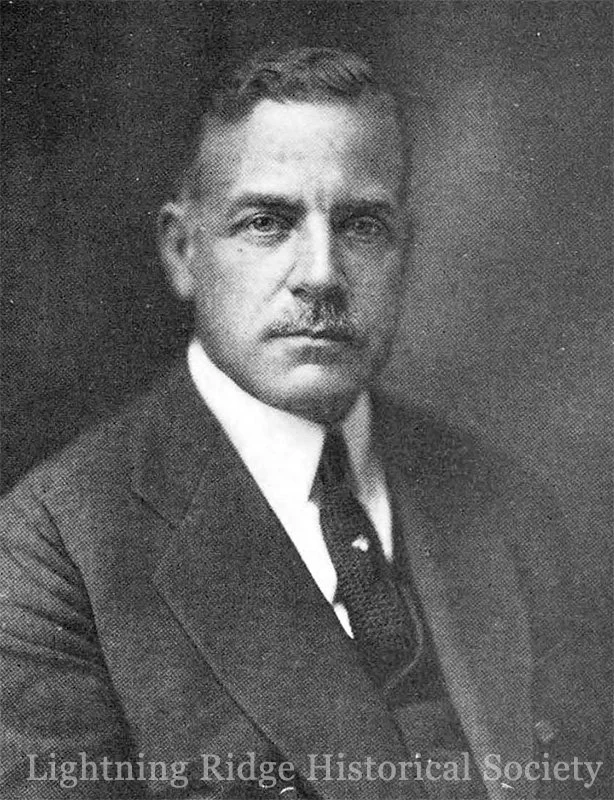Albert Ramsay
Albert Ramsay was an English-born gem dealer and opal buyer who played a significant role in the early development of Australian opal, particularly at White Cliffs and Lightning Ridge. Born on 29 November 1879 to Robert and Alice Ramsay, he was raised in a family of lapidaries and developed a fascination with gemstones from an early age. He married Edith Willett in 1903 and had two children.
Ramsay first gained attention in the Australian gem trade as a buyer who tied up large sections of the opal market at White Cliffs in the early 1900s. He was known for purchasing only the best stones, and by the time he arrived at Lightning Ridge around 1910, he already had a reputation as a serious opal buyer. According to later recollections by John Landers, Ramsay purchased part of the famous Callum & Scott parcel from the Three Mile, described as one of the largest parcels ever sold from Lightning Ridge.
His 1910 visit to Lightning Ridge was documented in his own writing and newspapers. Ramsay described travelling on horseback from Walgett through thick scrub to reach the Ridge, which at the time consisted of tents and rough dwellings. To avoid bushrangers, he left his money at the bank in Walgett and paid miners by cheque, the first person on the field to do so. On his first visit, he is said to have spent about $50,000 (in 1910 US currency) on rough black opal.
During the visit, Ramsay went shooting in the scrub and became lost. A large search party was assembled, involving some 400 miners. He was eventually found by an Aboriginal tracker late at night. He later speculated that the rescue effort may have had more to do with preserving a good customer than concern for his wellbeing!
Ramsay’s self-published 1925 book, In Search of the Precious Stone is one of the earliest literary works describing life on the opal fields at Lightning Ridge. It was published the same year as T. C. Wollaston’s Opal - The Gem of the Never Never.
In later years, Ramsay traveled to Siam, Burma, and Ceylon, becoming well known in international gem circles. By the 1930s, he was living in New York City, where he continued to deal in gems and build his private collection. He gained particular recognition for acquiring and cutting the 959-carat Mogok sapphire known as the Gem of the Jungle, which he divided into nine stones.
Albert Ramsay died in Queens, New York, on 25 October 1946, aged 66, and was buried in Oakwood, Illinois.
Article: Research by Russell Gawthorpe and Leisa Carney, edited by Russell Gawthorpe. LRHS research compiled by Len Cram and Barbara Moritz. Sources: In Search of the Precious Stone, Albert Ramsay, 1925; palagems.com/ramsay; The Lightning Ridge Book, Stuart Lloyd, 1967, p. 15; ’The Greatest Thrill In The World’, Sunraysia Daily, 12 December 1933, p. 6.

